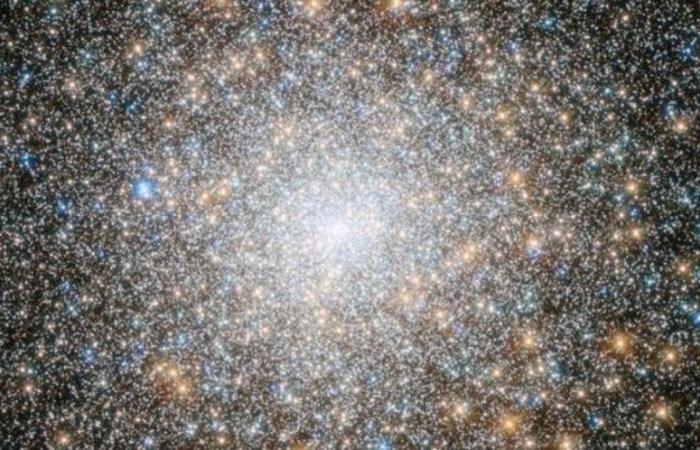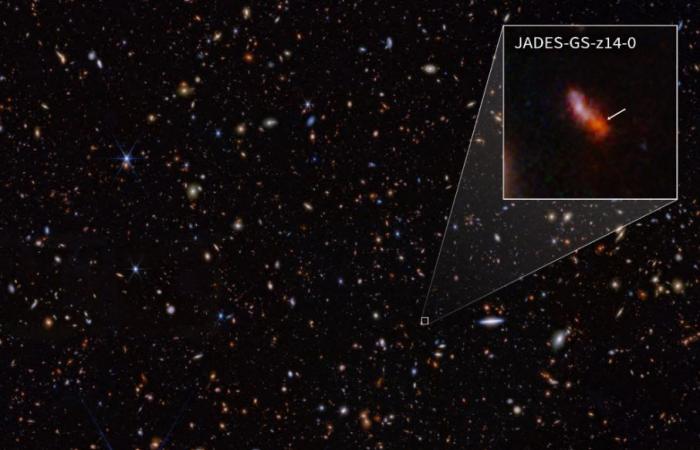EFE
He James Webb Space Telescope has observed five star clusters in a galaxy just 460 million years after the big Bangso they could be the first candidates for protoglobular clusters known to date.
Until just two years ago, many secrets of the cosmos remained hidden from astronomers, but the arrival of the space telescope James Webb -from NASA, ESA and the Canadian agency- has changed things. This technological marvel has opened a new era in astronomical research.
He telescopewhich operates in the infrared, can see cold objects, very distant or hidden behind dust, allowing it to observe the early universe and see objects as old as the cumulus that you just discovered.
“These structures are the star clusters oldest ever detected and could be precursors of the globular clusters that we currently observe in our galaxy,” said Yolanda Jiménez, researcher at the Institute of Astrophysics of Andalusia (IAA-CSIC) -southern Spain- and co-author of the work.
The research, which can shed light on how galaxies were formed in the early universe, has been led by Stockholm University (Sweden) and was published this Monday in the journal Nature.
Photo: NASA
The direct observation of these structures would not have been possible without the help of gravitational lenses, large accumulations of matter that stand in our line of sight. vision of distant galaxiesacting as “magnifying glasses” that magnify the objects behind them and sometimes distorting their image in the shape of an arc.
In this case, the galactic cluster SPT-CL J0615−5746 expanded the light of the galaxy called the Cosmic Gem Arc, to 460 million light years after the Big Bang, which thanks to James Webb, scientists have managed to “reveal its fascinating structure,” clarified the researcher at the IAA-CSIC.
Thanks to its extraordinary resolution and sensitivity, Webb observations found five compact points perfectly distributed along the arc Cosmic Gemsas if it were a necklace.
Photo: AFP.
The five Gems appeared duplicated almost symmetrically at the other end of the arc, “an unequivocal sign that they were points where the magnification power of the lens cluster was maximum,” said José M. Diego, scientist at the Institute of Physics of Cantabria -north. of Spain- (IFCACSIC-UC), joint center of the CSIC and the University of Cantabria, and co-author of the article.
The region, which was first observed by the Hubble Space Telescope in 2018, has properties that indicate it may be a site of reionization, but the components have been difficult to resolve.
Very dense star clusters
The JWST data reveal five star clusters, systems of gravitationally bound stars, each about 1 parsec (about 3.26 light years) in size, the study notes.
This size indicates that the clusters are very dense, about 3 orders of magnitude more than typical young star clusters in the local universe.
These features suggest that these newly discovered star clusters could be the precursors to the globular clusters we currently observe in our own Milky Way galaxy.
The globular clusters They are groupings of thousands or tens of thousands of old stars bound gravitationally, scattered throughout the halo of the Milky Way and some with ages comparable to those of the galaxy itself.
“This result is of great importance, since we currently do not know the origin of globular clusters. The discovery of the Gems provides for the first time a time scale for their formation and reveals their initial physical properties,” explained Jiménez.
The Gems are, in addition, responsible for most of the ultraviolet emission of the galaxy where they are and are, therefore, one of the main reionization sources of the early universe, a crucial time in the history of the universe between 150 million and 1 billion years after the Big Bang.
At that stage the first stars and galaxies began to shine, emitting radiation that ionized the existing neutral hydrogen gas, which facilitated the formation of the galaxies and cosmic structures that we observe today.
“The search for these sources, as well as the first stars, is one of the main objectives for which the James Webb Space Telescope“said the IFCA-CSIC-UC researcher.







